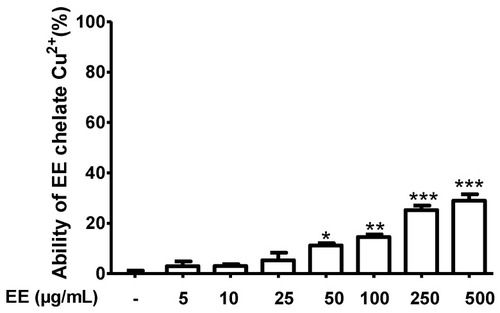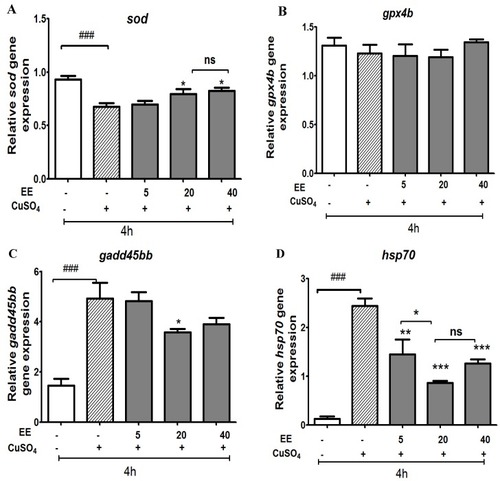- Title
-
Anti-Inflammatory and Antioxidant Properties of the Ethanol Extract of Clerodendrum Cyrtophyllum Turcz in Copper Sulfate-Induced Inflammation in Zebrafish
- Authors
- Nguyen, T.H., Le, H.D., Kim, T.N.T., The, H.P., Nguyen, T.M., Cornet, V., Lambert, J., Kestemont, P.
- Source
- Full text @ Antioxidants (Basel)
|
Protective effect of the ethanol extract of |
|
Effect of the ethanol extract of C. cyrtophyllum leaves (EE) on Cu2+ chelation ability. Each bar represents the mean ± S.E. for three different experiments performed in triplicate. * |
|
Inhibitory effect of ethanol extract (EE) from leaves of |
|
Effect of ethanol extract (EE) of |
|
Effect of ethanol extract (EE) of |
|
Relative expression of genes involved in immune responses ( |
|
Relative expression of genes involved in immune responses ( |
|
Relative expression of genes involved in immune responses ( |
|
Relative expression of anti-inflammatory gene ( |









